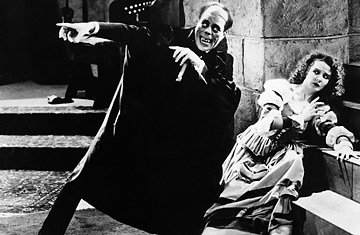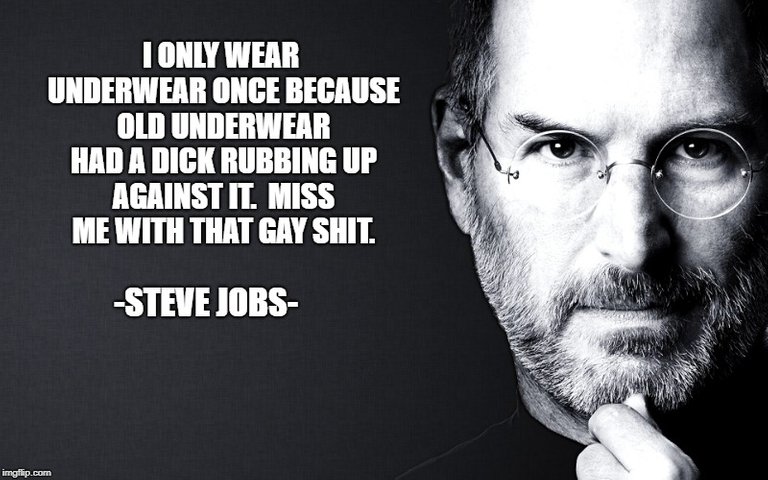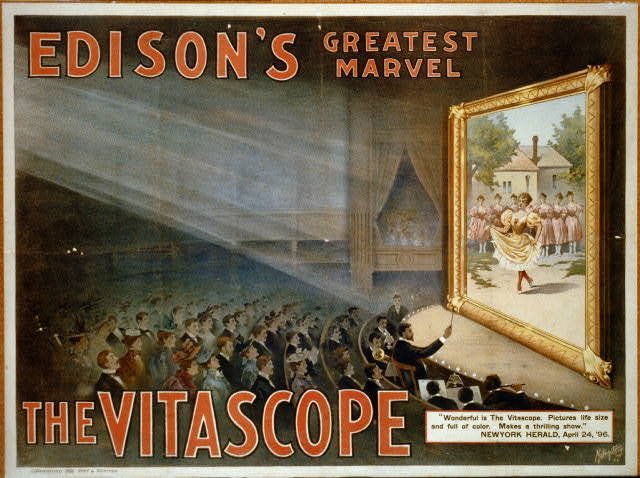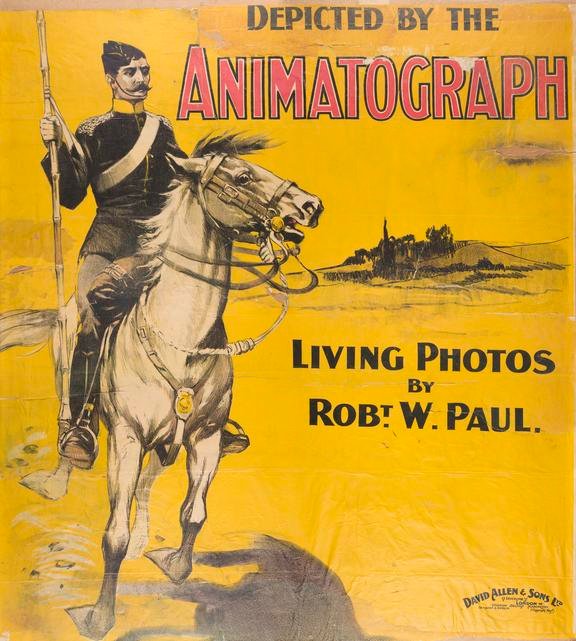
The reason why movies and television work is because our bodies are stupid and lazy. When you look at an image it lingers for a spilt second while your eyes and brain communicate to figure out what you are looking at. If you see the same thing over and over again your brain will sort of fill in the blanks itself and pretend it is doing its’ job instead of processing the image repeatedly. This is why when you are on a road trip you zone out and realize you haven’t been paying attention to the road for a solid five minutes or why you go to work in a cubicle and realize you don’t know what happened to the last twenty years of your life. Scientists have noted and experimented with brain lag for hundreds of years to make cool optical illusions. There are so many inventions built all around the world to create the illusion of movement that you can’t really say any one person invented moving pictures. The first widely available moving picture device was the phenakistiscope in the early 1800’s. It was just a bunch of drawings on a spinning disk

The human brain can process about twelve frames per second and see still images. After that they appear to be moving because the eye gives up bothering. Silent films used around seventeen frames frames per second. Most modern movies use twenty four, and video games can get over a hundred FPS. The point of that is; back when it took five minutes to take a single photograph and half an hour to develop it, an hour and ten minute movie using 158,400 frames would take approximately a long fucking time to make. Cameras were going to have to get a lot better before people would be able to watch stepmom porn.
In 1872 British photographer, Eadweard Muybridge (whose real name was Edward James Muggeridge. He changed it because he thought it sounded cool), was acquitted for murder by reason of justifiable homicide after shooting some dude for banging his wife. He was working at the time for a race horse breeder and former California governor Leland Stanford, who paid for Edward’s defense. Stanford wanted to prove that at some point during a full galop a horse had all four legs off the ground at the same time. Muybridge set up twelve cameras with tripwires to set off the cameras. He proved Stanford was right, and was credited with bringing stop motion pictures to life.

Muybridge went to Thomas Edison with his discovery and the two agreed to collaborate on exploiting the newfound black magic camera fuckery. Then Edison filed a patent for his idea to “Create a device that would do for the Eye what the phonograph does for the Ear". Then he stopped answering Muybridge’s phone calls. Shit really started taking off in 1887, when Thomas Edison employee Hannibal Goodwin invented celluloid film that ran along tracks to create movement for William Dickson’s kinetoscope picture viewer, who also worked for Edison and most likely stole the idea from French inventor Louis Le Prince. The kinetoscope could only be viewed by one person at a time, and weighed about a thousand pounds.

Cameras were still a pain in the ass so in 1889 Edison was scouting French scientist Étienne-Jules Marey so he could steal the idea for his chronophotographic gun. It looked like a tommy-gun, but instead of bullets it had a glass cylinder that could take twelve pictures a second. Marey had invented the camera gun to study the movement of birds. In 1890 Marey disappeared and was never seen again. Marey's family would later testify in court against Edison, who was claiming he was the sole inventor of the moving picture camera and deserved royalties on anything resembling Marey's work.
Edison was like the Steve Jobs of the 1800’s. He had an army of inventors churning out products so he could waltz out in his black turtleneck and take credit for everything. .

In 1894, French brothers Louis and Auguste Lumière saw an exhibition of Edison’s kinetoscope in Paris. Being already balls deep in the photography business, the brothers quickly invented a single camera that could film and project moving images. In 1895 they introduced the world to cinema at the Salon Indien du Grand Café, where they showed ten, fifty-second films depicting people mostly just walking around not doing anything particularly interesting.
Edison wanted in on the projecting business because having hundreds of people pay to watch a movie at the same time was obviously better than the single file model with his kinetoscope. About that time Indiana inventor Charles Jenkins invented a projector called the Phantoscope. His business partner stole the only working model and sold it to the Gammon Theater chain, then he sold the patent to Thomas Edison. Thomas Edison rebranded it as the Vitascope, and claimed he invented it all by himself.

In 1895 French magician Georges Méliès saw one of the Lumière brothers movies and was all like, “Hey man, let me get in on that shit. I’ll give you 10,000 Francs for one of your machines.” The brothers were like, “Nah, fuck off.”
Some Greek businessmen approached British inventor Robert William Paul to knock off one of Edison’s kinetiscopes they had purchased. It turns out Edison forgot to patent the kinetoscope in England, so Paul was like, “Cool fam. I got you.” He made some adjustments to the kinetoscope and started selling his projecting knockoff version, the animatograph and went to town bootlegging Edison’s machines and movies. Georges Méliès approached Paul and said, “Hey man, let me buy one of those animatographs.” Paul was like, “Lol, idgaf.”

Méliès made some adjustments to the animatograph and came up with a camera/projector he called “The Coffee Grinder.” It sucked, so he wound up buying a camera from the Lumières after all. Most moving pictures at the time were documentaries, news reels, and people walking around. Theaters that started popping up were more likely to advertise what kind of camera they were using than the content of the show. Méliès shot longer form reels that experimented with special effects to show what film is capable of. For the next couple years Méliès churned out scores of movies, including one about a giant Devil terrorizing Romeo and Juliet, who gets chased off by the Virgin Mary. In 1902 Méliès put out Le Voyage dans la Lune (A trip to the moon), which was copied by the Smashing Pumpkins for their 1996 video “Tonight Tonight,” starring the guy who does the voice for Spongebob Square Pants. La Lune was the longest movie ever made at the time, clocking in at a staggering fourteen minutes. It was an immediate international smash hit. Salty ass Thomas Edison did everything he could to block Le Voyage dans la Lune from being played in America, that is until he scored a copy of the movie and started bootlegging copies for himself.
Stay tuned for more back-stabbing and corporate espionage

That Steve Jobs quote... 🤣
I made that myself.
😂love the way you tell the story..I mean Truth 💪🙌✨
Posted using Partiko Android
Thanks. This started out supposed to be a broad overview of Hollywood, but there was so much juicy shitbaggery that I could only fit in the first 20 years of the movie camera existing in this blog, so I'm going to do a followup or two to this one.
As a follower of @followforupvotes this post has been randomly selected and upvoted! Enjoy your upvote and have a great day!
Hi @themadgoat!
Your UA account score is currently 4.089 which ranks you at #3306 across all Steem accounts.
Your rank has dropped 2 places in the last three days (old rank 3304).Your post was upvoted by @steem-ua, new Steem dApp, using UserAuthority for algorithmic post curation!
In our last Algorithmic Curation Round, consisting of 195 contributions, your post is ranked at #123.
Evaluation of your UA score:
Feel free to join our @steem-ua Discord server